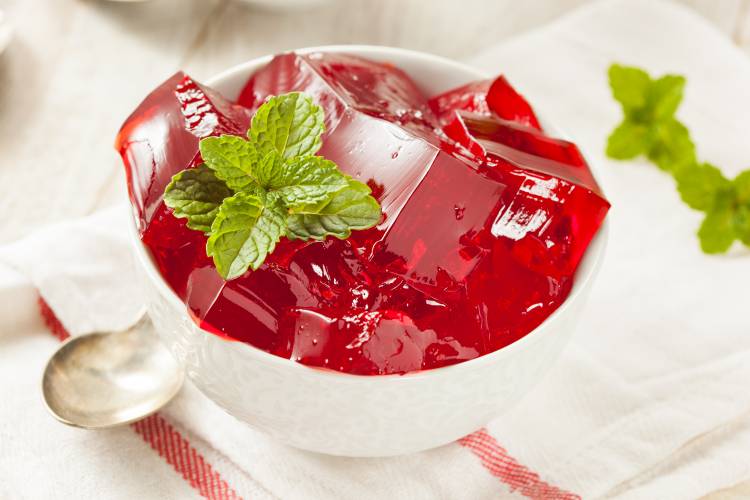Properties of gelatine: how do you include it in your diet?
Gelatine has many uses: while many use it to cook with, others include it in their daily diet. Do you know what its benefits and properties are?
TRIED AND TESTED
Share

Gelatine is in fashion, particularly among sportspeople. In the past, it was a food that was associated with infancy and with periods of convalescence following ill health. But in recent years, it has become an important supplement for muscle recovery. Continue reading if you want to find out about the main benefits and properties of the dessert for sportspeople.
Properties and types of gelatine
Its high protein value has made this food a natural supplement for sportspeople and fitness fans. But you need to distinguish between the three types of gelatine that exist because, depending on which one you choose, it has different types of nutritional qualities:
- Of animal origin: this is the richest in natural protein because it is obtained from the connective tissue of the animals, mainly the skin, tissue and bones.
- Of vegetable origin: this comes from different vegetable sources, but the most commonly-used is agar-agar, which is extracted from different types of red algae. It has a high fibre content and hardly any calories.
- From sugars: this contains carbohydrates, so its calorific content is higher.
Properties of gelatine of animal origin:
- Source of protein: contains over 80% protein.
- Protects bones and joints and improves the skin: the collagen content helps to maintain the skin’s elasticity and to strengthen nails and hair. It also contributes to improving the condition of bones, tendons and joints.
- Helps to improve muscle tone: as with other amino acids, it contains glycine and arginine, which help with muscle building.
- Helps digestion: glycine also helps to process certain foods, such as dairy and meat.

How to reduce weight with gelatine
Gelatine has become popular as a dessert that can be included in a healthy weight reducing diet due to its low calories and low amount of sugars. However, despite its protein content, it should not be a substitute for essential foods within your diet such as fruit or vegetables, above all, because it does not contain all the essential amino acids that our bodies need to function.
How many times a day can you eat gelatine?
For a long time, it was thought that it was not advisable to consume gelatine because of the colourants, sugar and other additives it contains. However, moderate consumption of foods containing gelatine, as part of a balanced diet, is not harmful. Even so, choosing varieties with no added sugar is recommended.
To help improve your cartilage and bone health and increase the regeneration rate of your joints, etc. you need to consume some 10 grams of gelatine a day.
How many calories does diet gelatine contain?
The calories contained will depend on the type of gelatine you choose. Unlike other diet desserts, light gelatine does not contain fats or cholesterol. If preparations with added sugar or artificial contents are avoided, it is a very healthy snack which, due to its low calorie content, will not make you gain weight.






